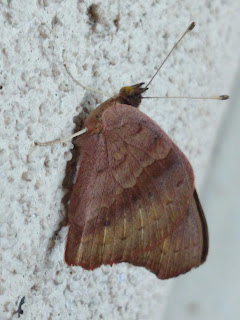While many people are accused of not seeing the forest for the trees, a forest is a lot more than just its trees. All the animals, the soil and even the air are all different in a forest and all are important
This bridge damage is unlikely to be repaired anytime soon, however. Only a few winters will be enough to rot through these boards through. Wood is quite a precious resource now, but access to the forest is even more so.
Wood ducks rely on dense undergrowth to feel safe from walkers. They pair up during the winter, with the vivid males staying very close to the cryptic female (can you see her in the picure, she's in front of the male). Thick branches help them feel safe from attack and they will keep hiding for a month or so until they feel safer in this area.
There are many birds that thrive well in the conditions of the Corrales bosque. Doves are here year round and seem very comfortable with both humans and the natural predators found here. They are always in a group for protection, and very fast fliers when needed.
Robins will be in our forest for the winter. They are generalist feeders that are good at adjusting quickly to current conditions. They adapt to almost anything around them, especially humans. Their Latin name is Turdus Migratorius and that name describes them very aptly.
The hunter's moon is a weird misnomer. In the autumn, this bright moon at night encourages elk to feed in the meadows for longer and this makes human hunting easier. In the bosque, the predators are often out hunting more on windy or rainy, dark nights when their prey have a much harder time hearing and seeing them. On bright, still, full moon nights, most hunters stay home.
Birds are feasting in the bosque because many insects are easy to catch in the cold and damp mornings. It is unusual to be able to pick up insects like this cabbage white. This butterfly, though, is much more cold tolerant than other butterfly species.
This owlet butterfly is another genus of the brush footed butterfly family. They appear to have only four legs because the first set have evolved into small "brushes."
I have only just found out about the weird tree cricket insects. They are a cricket species. The males entice females to mate using a glandular secretion from their bodies as a snack incentive. The chirping is usually much quieter that the field crickets, so some species create a megaphone from leaves. One particular species can be used as a thermometer "Dolbear's law"
The jelly fungus is a little more interesting. While most in this group are not poisonous, most do not exactly taste great. This species from fourth of July Canyon is reported to be gelatinous and tasteless. But I would never try any mushroom I hadn't bought from a store.
Dog vomit fungus is very common at certain times of the year. This is a dense collection of the the threads that actually make up the fungi in the soils. Fungi are very import to many plants, especially for taking up phosphorus in plants.
This colorful caterpillar in a mountain meadow is a hooded owlet . Because they are insects, the caterpillar only has six legs. All those other ones are actually just anchors to help movement. These have no segments and cannot "walk"
Predator and prey dynamics change pretty profoundly in the fall. While prey is often easier to find, the cold temperatures and short days can make things more complicated for predators like this red tailed hawk.
This squirrel is well established in this tree. Grey squirrels in the southwest do not often need hordes of acorns like those in the north do. But if you look closely you will see the ears are very ragged from frequent fights over ownership of this particular tree. Still , the view from the veranda seems good.
The iconic bird species for Corrales are these Sandhill cranes. They are large, graceful and colorful. These sound different than Canada geese and they fly with their legs stuck out behind them, which is pretty distinctive.
Most of the flocks of cranes are navigating south along the Rio Grande but so far are bypassing Corrales and heading to Sevietta and the wetlands around San Acacia. These birds value quiet and privacy, especially as they are planning on pairing up later in the year as their numbers swell.
Corrales used to grow a lot more fruit than it does now. There are still a few apple orchards around and some places such as Alary farms and more touristy Wagner farm are open to the public when staffing and the harvest allows. The waste apples are quite attractive to all wildlife except the cat species, but especially to the sandhill cranes.
In the dark, central hole of these webs sits a pretty large yet nervous spider. The silk is not especially sticky, it is really a protective covering, rather than a net for catching prey. The vibrations are sensed by the nearly blind spider using its sensitive leg hairs.
Personally, I have been to too many balloon fiestas. But here is the obligatory picture of a balloon dipping into the river. It is pretty astounding how those pilots can have such flight control over a bunch of bottled hot air.
Humans always find a use for things. Kayaking on the shallow Rio Grande is pretty foolhardy for most of the year. This year we have done pretty well water wise, so these is enough depth to float...barely. There is so much sediment in the water that it likely takes a while to clean up everything after a paddling session.
































No comments:
Post a Comment